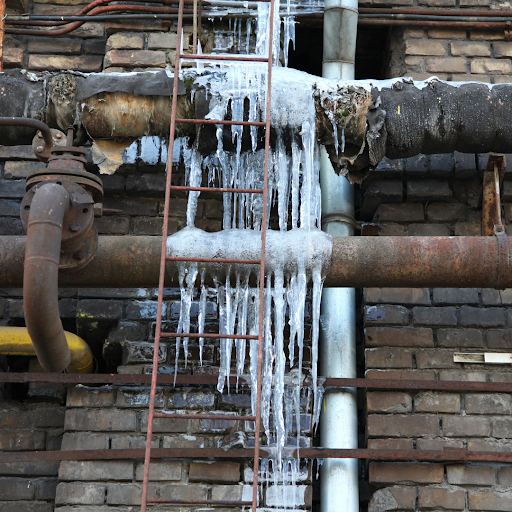Important Tips to Avoid Frozen Pipes in Cold Weather
Important Tips to Avoid Frozen Pipes in Cold Weather
Blog Article
On this page below you might get a good deal of good quality answers around How To Avoid Freezing Pipes.

Winter can wreak havoc on your plumbing, particularly by freezing pipes. Below's just how to stop it from taking place and what to do if it does.
Intro
As temperature levels drop, the risk of frozen pipelines rises, potentially resulting in costly repairs and water damages. Comprehending just how to avoid icy pipes is vital for home owners in cold environments.
Recognizing Icy Pipelines
What triggers pipes to ice up?
Pipelines freeze when subjected to temperature levels listed below 32 ° F (0 ° C) for extended durations. As water inside the pipelines freezes, it increases, putting pressure on the pipeline wall surfaces and potentially creating them to burst.
Risks and problems
Frozen pipes can lead to water system disturbances, residential property damage, and pricey repairs. Ruptured pipelines can flood homes and cause substantial structural damages.
Signs of Frozen Piping
Identifying icy pipelines early can avoid them from rupturing.
How to identify frozen pipelines
Seek decreased water flow from faucets, uncommon odors or noises from pipes, and visible frost on revealed pipes.
Avoidance Tips
Protecting prone pipelines
Cover pipes in insulation sleeves or make use of heat tape to shield them from freezing temperature levels. Focus on pipes in unheated or exterior locations of the home.
Heating methods
Keep indoor rooms sufficiently heated, particularly areas with plumbing. Open cupboard doors to allow warm air to distribute around pipelines under sinks.
Protecting Outside Pipes
Yard tubes and exterior taps
Separate and drain pipes yard pipes before winter months. Set up frost-proof spigots or cover outside faucets with shielded caps.
What to Do If Your Pipelines Freeze
Immediate activities to take
If you believe icy pipelines, maintain taps open to soothe pressure as the ice thaws. Use a hairdryer or towels taken in warm water to thaw pipes slowly.
Long-Term Solutions
Structural adjustments
Think about rerouting pipes far from exterior walls or unheated areas. Include added insulation to attic rooms, basements, and crawl spaces.
Updating insulation
Buy top quality insulation for pipelines, attic rooms, and walls. Appropriate insulation aids keep regular temperature levels and lowers the danger of frozen pipelines.
Final thought
Preventing icy pipes needs aggressive actions and quick feedbacks. By comprehending the causes, signs, and preventive measures, home owners can safeguard their plumbing throughout cold weather.
5 Ways to Prevent Frozen Pipes
Drain Outdoor Faucets and Disconnect Hoses
First, close the shut-off valve that controls the flow of water in the pipe to your outdoor faucet. Then, head outside to disconnect and drain your hose and open the outdoor faucet to allow the water to completely drain out of the line. Turn off the faucet when done. Finally, head back to the shut-off valve and drain the remaining water inside the pipe into a bucket or container. Additionally, if you have a home irrigation system, you should consider hiring an expert to clear the system of water each year.
Insulate Pipes
One of the best and most cost-effective methods for preventing frozen water pipes is to wrap your pipes with insulation. This is especially important for areas in your home that aren’t exposed to heat, such as an attic. We suggest using foam sleeves, which can typically be found at your local hardware store.
Keep Heat Running at 65
Your pipes are located inside your walls, and the temperature there is much colder than the rest of the house. To prevent your pipes from freezing, The Insurance Information Institute suggests that you keep your home heated to at least 65 degrees, even when traveling. You may want to invest in smart devices that can keep an eye on the temperature in your home while you’re away.
Leave Water Dripping
Moving water — even a small trickle — can prevent ice from forming inside your pipes. When freezing temps are imminent, start a drip of water from all faucets that serve exposed pipes. Leaving a few faucets running will also help relieve pressure inside the pipes and help prevent a rupture if the water inside freezes.
Open Cupboard Doors
Warm your kitchen and bathroom pipes by opening cupboards and vanities. You should also leave your interior doors ajar to help warm air circulate evenly throughout your home.

As an enthusiastic person who reads on Prevent Frozen Pipes , I thought sharing that excerpt was sensible. Do you know about somebody who is occupied with the niche? Please feel free to share it. Kudos for being here. Return soon.
Estimate Report this page